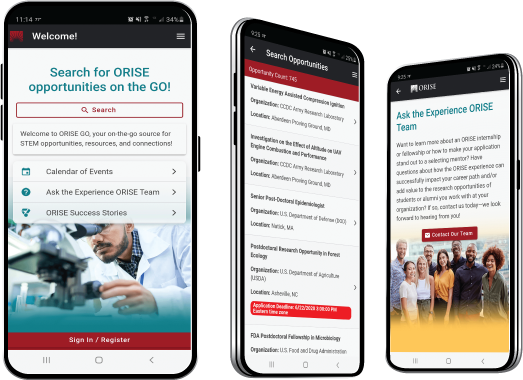Automated Animal Behavior Monitoring System Development- CBER
A complete application consists of:
- An application
- Transcripts – Click here for detailed information about acceptable transcripts
- A current resume/CV, including academic history, employment history, relevant experiences, and publication list
- Two educational or professional references
All documents must be in English or include an official English translation.
If you have questions, send an email to FDArpp@orau.org. Please include the reference code for this opportunity in your email.
A postgraduate research opportunity is available at the Food and Drug Administration (FDA), Center for Biologics Evaluation & Research (CBER), in the Division of Veterinary Services .
An ORISE fellow will be instrumental to advancing the progress on a high impact project for automated home-cage ethology assessment. The goal of the project is continued development of an automated monitoring system that quantifies and evaluates the activity of mice in cages housed in animal facilities for research purposes. Such a system would allow the behavioral effects of experimental treatments or genetic manipulations to be easily demonstrated and analyzed by investigators at the FDA White Oak Animal Research Program. The effects of genetic manipulations and novel treatments on murine behavior are largely hidden from animal users because assessment is specialized and labor intensive and typically needs to take place after the animal room lights go out. At the present time, there is no scalable system commercially available that can accurately assess rodent activity and well-being while animals are on research studies within their primary enclosures. The system in development opens up the potential for large-scale wide-range use of automated video monitoring in animal facilities. Our system can be used to explore the following avenues: (1) assessment of behavior and activity of mouse models during short-term and long-term experiments, (2) interventions affecting pain, and (3) interventions affecting quality of life. Our system aims to eliminate concerns often associated with many mouse monitoring methods, such as circadian rhythm disruption, acclimation periods, lack of night-time measurements, overly simple measures that are not representative, and short monitoring periods. Interested users include those working with mice experiencing slowly degenerative neurological disease as well as acute infectious disease models such as influenza.
A video-monitoring system has been designed and built in collaboration with NIH researchers. The optimized mechanical design of the system allows high-quality video acquisition for mice cages housed within ventilated racks. The systems low cost and suitability for use in existing animal facilities without modification to animal husbandry procedures or housing setup, renders it highly scalable and easy to use in FDA’s research environment, including specialized infection-containment caging. The ORISE fellow, with support from other engineers from NIH Center for Information Technology, will facilitate development of test system that can be used for FDA study animals. This includes video recognition algorithms, data management tools, and continued develop of hardware and software to be used by the end-user.
This program, administered by ORAU through its contract with the U.S. Department of Energy to manage the Oak Ridge Institute for Science and Education, was established through an interagency agreement between DOE and FDA. The initial appointment is for 12 months, but may be renewed upon recommendation of FDA contingent on the availability of funds. The participant will receive a monthly stipend commensurate with educational level and experience. Proof of health insurance is required for participation in this program. The appointment is full-time at FDA in the Silver Spring, MD and NIH in the Bethesda, MD area. Participants do not become employees of FDA or the program administrator, and there are no fringe benefits paid.
Applicants must have received a bachelors degree in Electrical Engineering, Mechanical Engineering, or Biomedical Engineering within five years of the desired starting date.
Adapting the technology for the racks in the FDA animal facility is a multi-faceted effort requiring knowledge in a variety of specialties. The project can greatly benefit from the contribution of an ORISE fellow with interest and/or expertise in the following disciplines:
• Three dimensional computer aided design (3D CAD).
• Mechanical design, fabrication, and assembly.
• Electronic printed circuit board prototyping, testing, and assembly.
• Electronics systems prototyping, testing, and assembly.
• Data acquisition and processing.
• Video acquisition and processing.
• Programming tools: Python, C, Matlab.
• Software for interfacing with electronic/mechanical hardware.
• Animal experiments setup and validation
• Image and video processing algorithm development, testing, and validation.
• Graphical user interface (GUI) design.

 ORISE GO
ORISE GO

The ORISE GO mobile app helps you stay engaged, connected and informed during your ORISE experience – from application, to offer, through your appointment and even as an ORISE alum!





